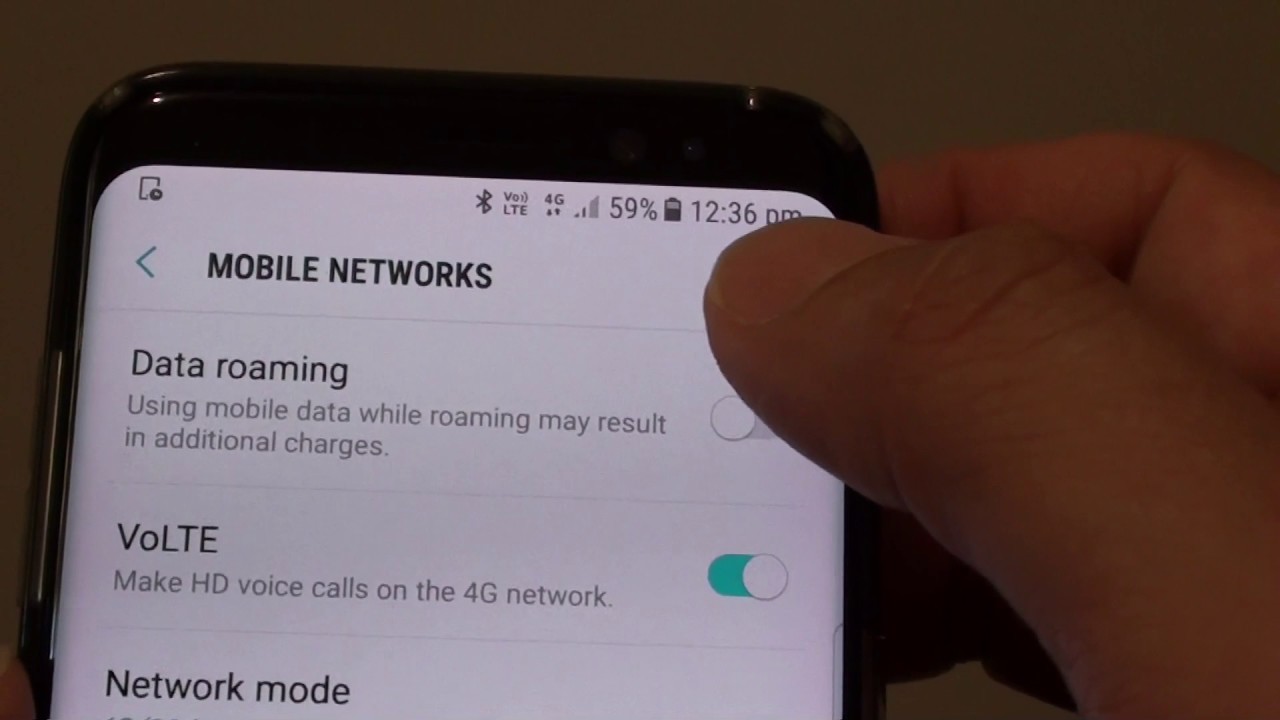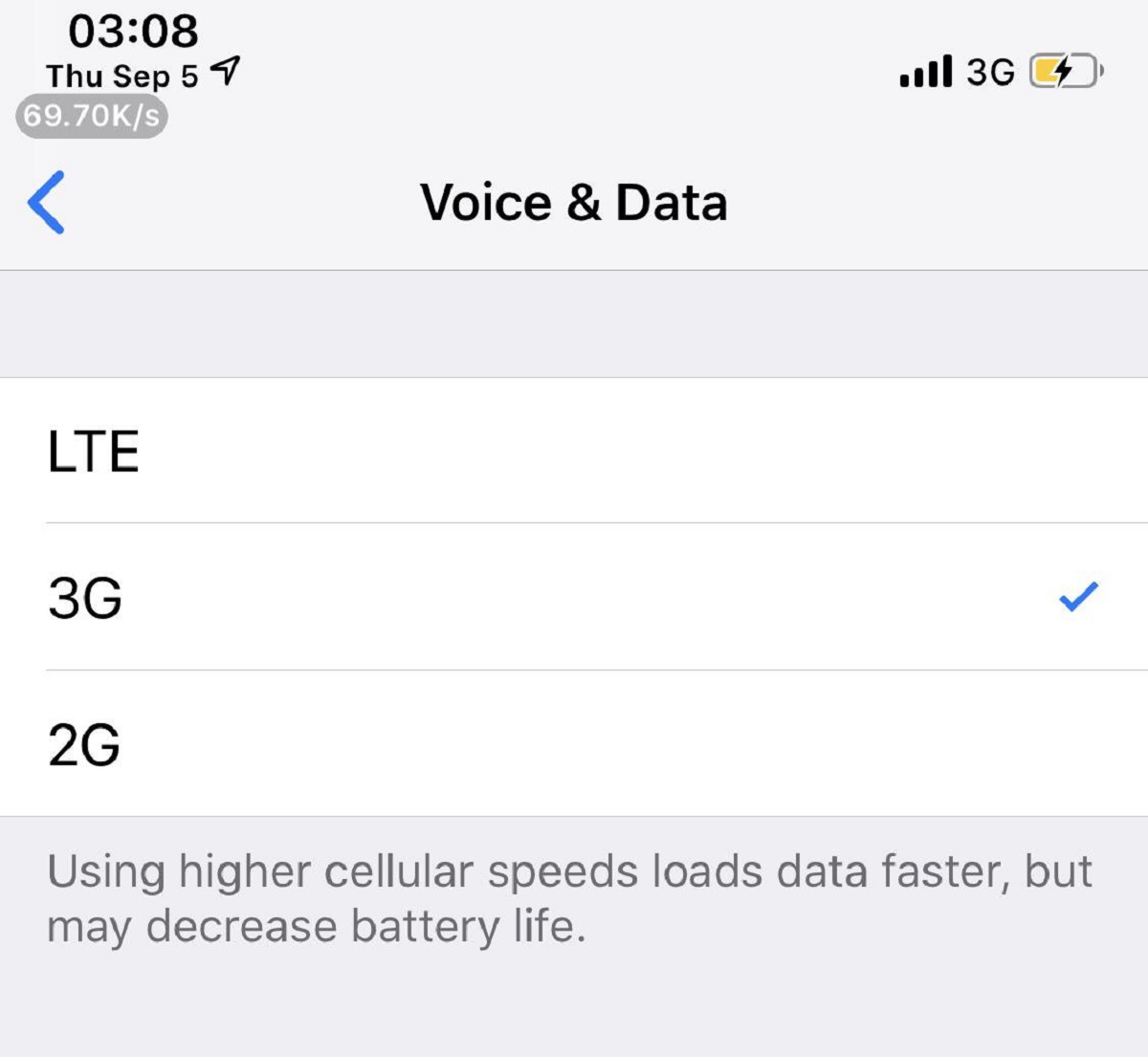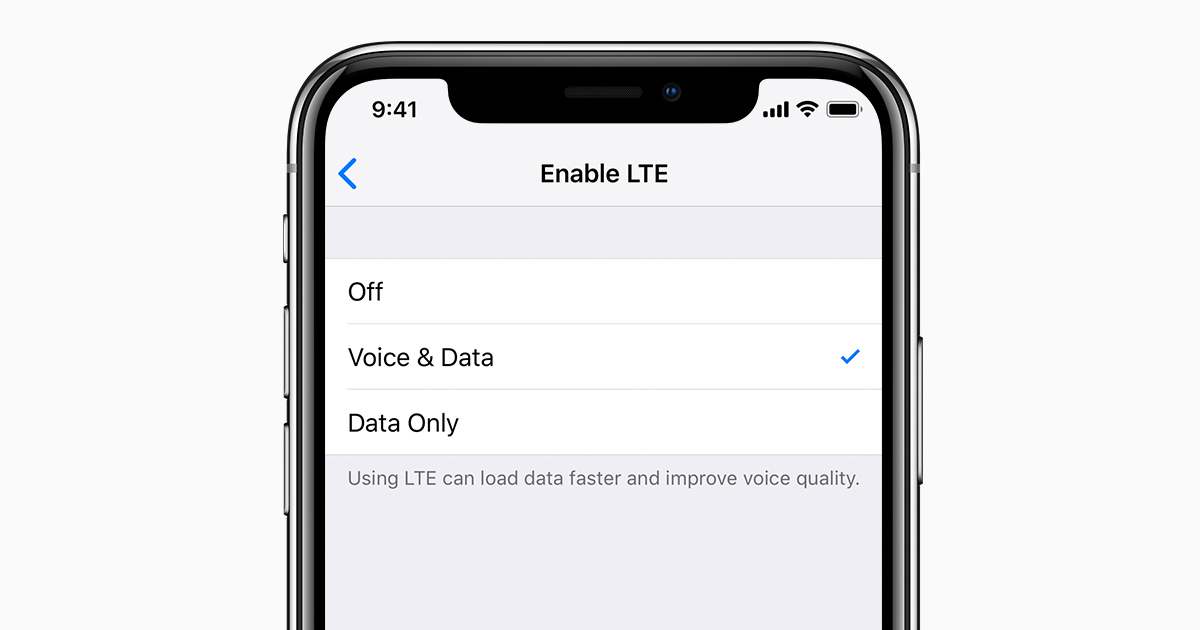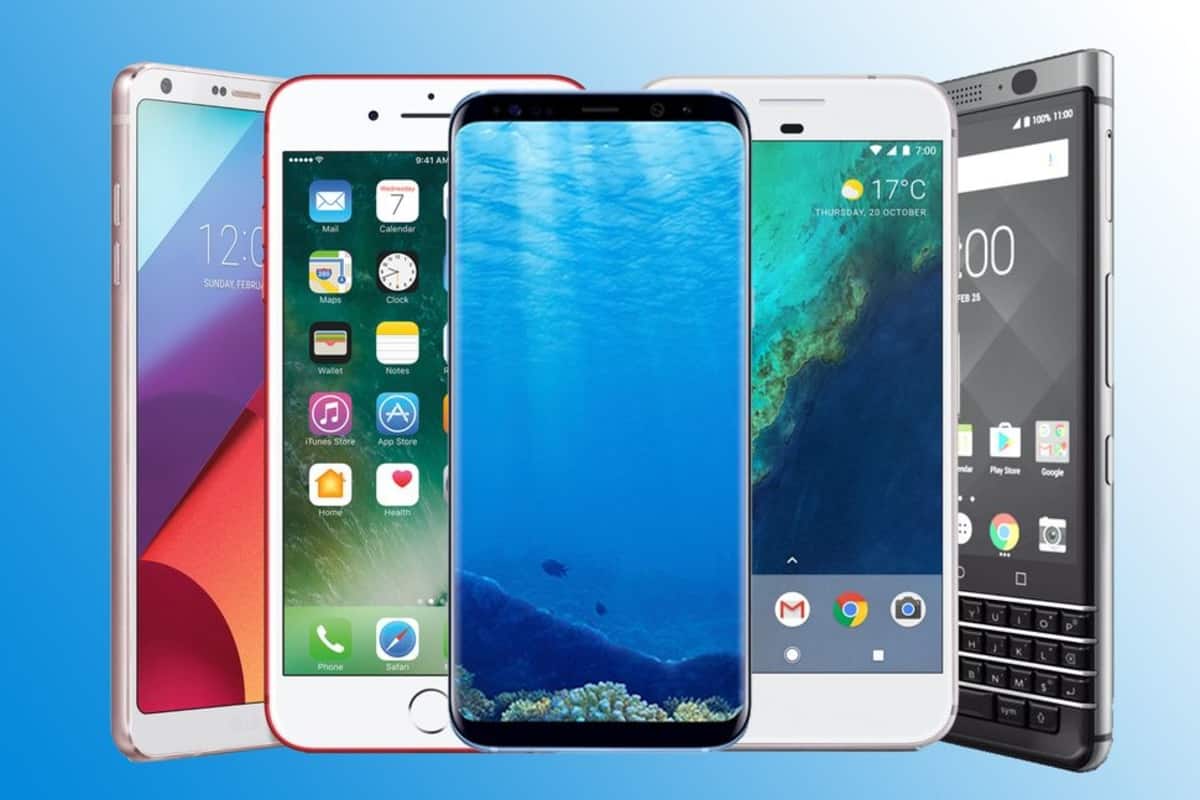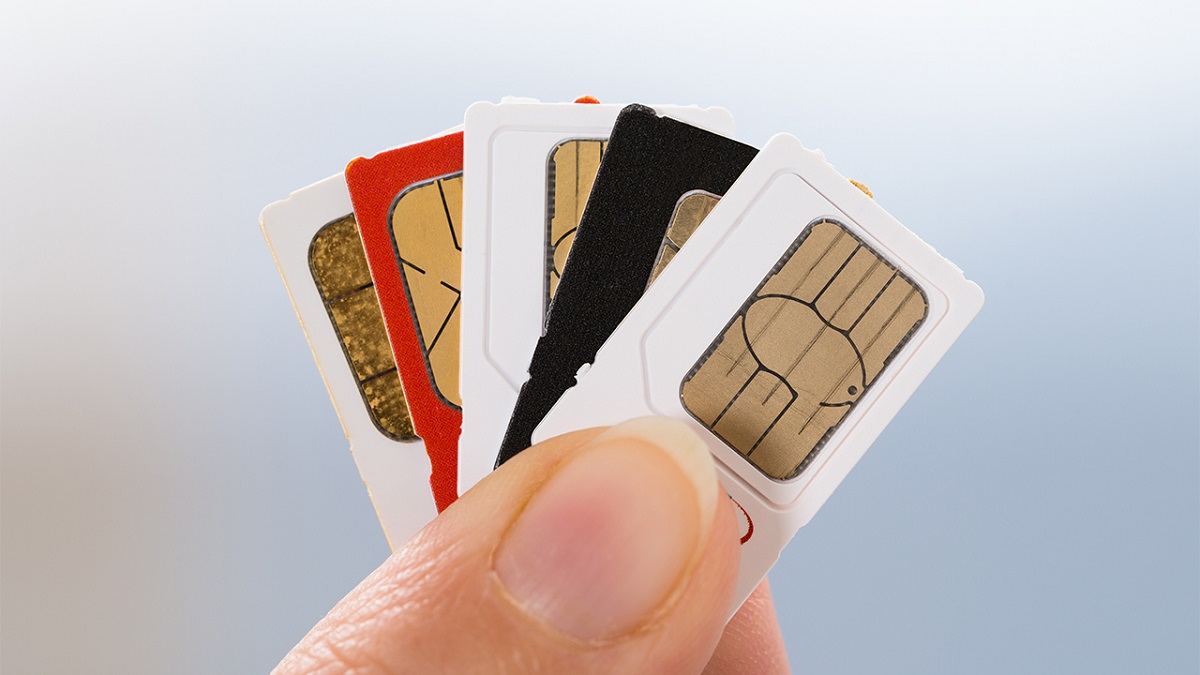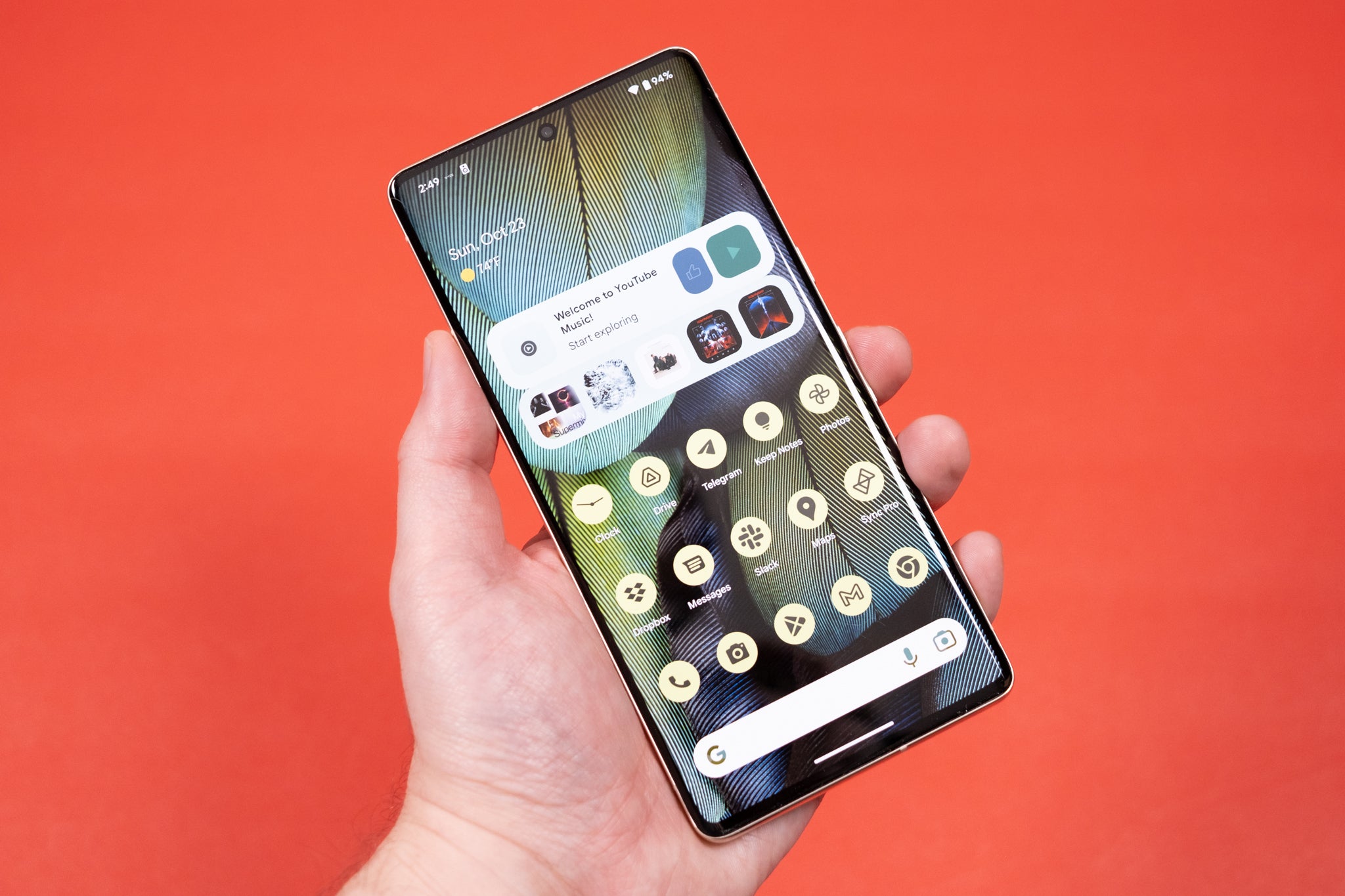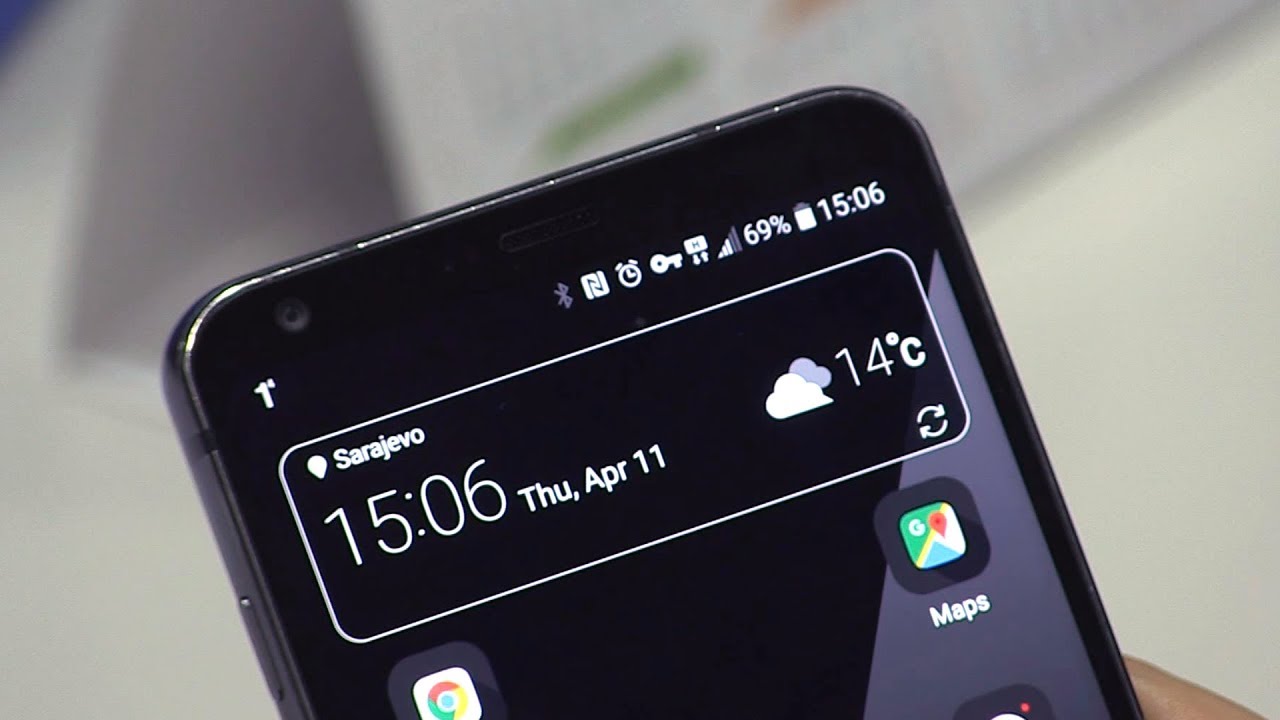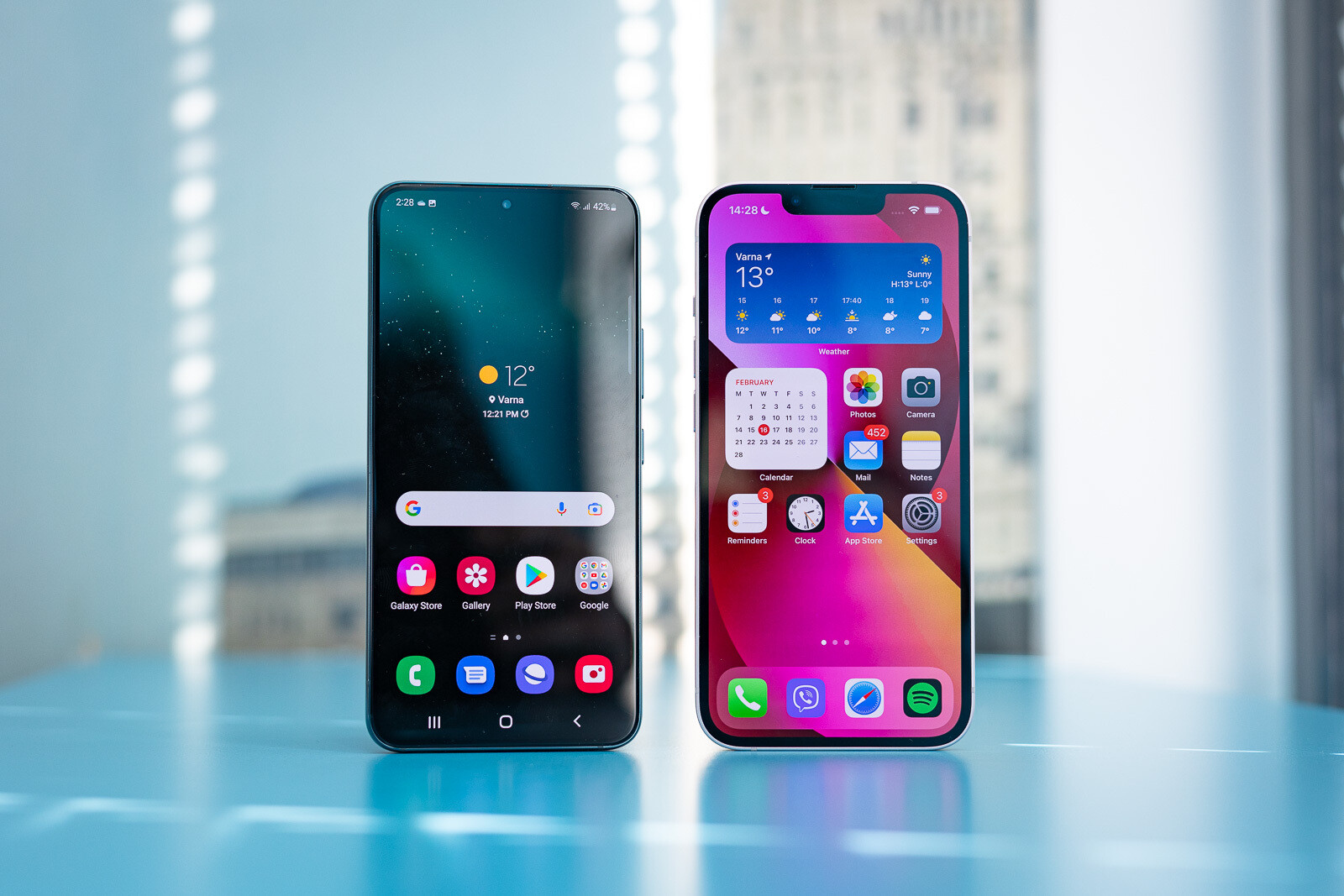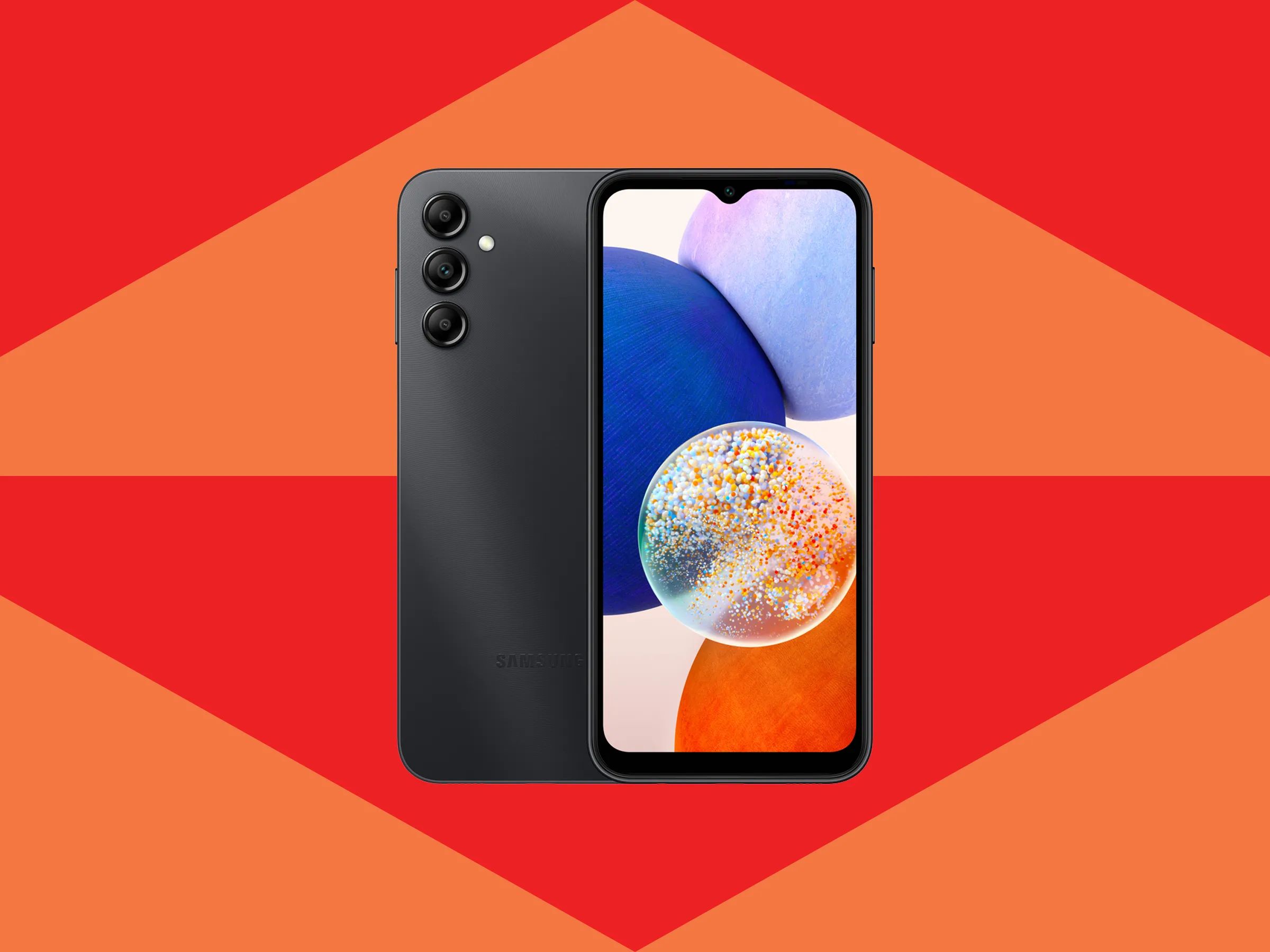Introduction
With the rapid advancement of technology, mobile phones have become an essential part of our daily lives. Whether we are browsing the internet, streaming videos, or staying connected with loved ones, a reliable and fast mobile network is crucial. One of the most commonly used networks today is 4G, which stands for “fourth generation.” But have you ever wondered why your phone is in 4G and what it actually means?
In this article, we will explore the world of 4G networks and delve into the reasons why your phone might be utilizing this technology. We will explain how 4G works, the benefits it offers, and the factors that determine why your phone connects to a 4G network. By the end, you will have a better understanding of the reasons behind your phone’s connection and the factors that influence its network choice.
So, let’s dive into the fascinating world of 4G and unravel the mystery behind why your phone may be utilizing this technology.
What is 4G?
4G, short for fourth generation, refers to the latest generation of mobile network technology. It is a successor to the earlier 3G (third generation) networks and is designed to provide faster internet speeds, improved call quality, and enhanced data capabilities for mobile devices.
One of the key features of 4G is its ability to offer high-speed data connectivity, allowing users to browse the internet, download files, and stream media content seamlessly. With 4G, you can experience speeds that are several times faster than previous generations, enabling smooth video streaming and faster app downloads.
4G networks use a technology called Long-Term Evolution (LTE) to deliver high-speed data transfer rates and low-latency connections. LTE is a wireless communication standard that allows for efficient use of network resources and provides a stable and reliable connection for users.
In addition to faster speeds, 4G introduces advanced features such as improved voice calling capabilities through Voice over LTE (VoLTE). VoLTE makes it possible to transmit voice calls over the 4G network, delivering clearer and more reliable voice communication compared to traditional 2G and 3G networks.
Furthermore, 4G supports a wide range of multimedia services, including high-definition video streaming, online gaming, and video conferencing. The increased bandwidth and reduced latency of 4G networks provide a smoother and more immersive experience for users engaging in these activities.
In summary, 4G is the latest generation of mobile network technology that offers high-speed data connectivity, improved call quality, and advanced multimedia capabilities for mobile devices. It enables faster internet speeds, enhances voice communication, and supports a wide range of multimedia services, making it an essential component of today’s digital world.
How Does 4G Work?
4G networks operate using a combination of different technologies and protocols to provide fast and reliable mobile connectivity. Here’s a simplified explanation of how 4G works:
1. Radio Waves: 4G networks use radio waves to transmit data between mobile devices and cellular towers. These radio waves are part of the electromagnetic spectrum and operate at higher frequencies than older network technologies, allowing for greater data transfer speeds.
2. Cellular Towers: The network infrastructure consists of cellular towers or base stations that are strategically placed to cover a specific area. Each tower is equipped with multiple antennas that transmit and receive signals to and from mobile devices.
3. Data Transmission: When you perform an action on your mobile device, such as browsing the internet or streaming a video, the data is broken down into smaller packets. These packets are then transmitted wirelessly to the nearest cellular tower.
4. Packet Switching: The data packets are sent through the cellular network using a technique called packet switching. This means that the packets can take different routes to reach their destination, optimizing network efficiency and reducing latency.
5. Internet Backbone: Once the data packets reach the cellular tower, they are forwarded to the internet backbone, which is a high-speed network infrastructure that connects various networks together.
6. Internet Connectivity: The data packets are routed through the internet backbone to reach their intended destination, such as a web server or streaming platform. Similarly, when you receive data on your mobile device, it follows the reverse path through the cellular network and reaches your device.
7. Quality of Service: 4G networks prioritize certain types of data, such as voice calls or video streaming, to ensure a consistent and high-quality user experience. This is achieved through Quality of Service (QoS) mechanisms implemented in the network infrastructure.
By utilizing these technologies and protocols, 4G networks provide fast and reliable mobile connectivity for a wide range of applications. Whether you’re browsing the internet, making a phone call, or watching a video, the underlying mechanisms of 4G work together to deliver a seamless and enjoyable user experience.
The Benefits of 4G
4G technology brings numerous benefits to both mobile users and businesses alike. Let’s explore some of the key advantages of using 4G networks:
1. Faster Internet Speeds: One of the most significant advantages of 4G is its ability to deliver faster internet speeds. With 4G, you can experience download and upload speeds that are several times faster than previous generations. This means you can browse websites, stream videos, download files, and use data-intensive applications with minimal latency.
2. Improved Call Quality: 4G networks support Voice over LTE (VoLTE), which enhances the quality of voice calls. Unlike traditional cellular networks, which rely on 2G or 3G technology for voice calls, 4G enables high-definition voice calls with clearer audio and reduced background noise.
3. Seamless Streaming and Gaming: With faster data speeds and lower latency, 4G networks provide an optimal experience for streaming videos and playing online games. You can enjoy high-definition video streaming without buffering and play online games with smoother gameplay and reduced lag.
4. Enhanced Mobile Work Experience: For business professionals on the go, 4G offers several advantages. It allows for remote work capabilities, enabling seamless access to email, cloud storage, and business applications. You can attend virtual meetings, collaborate with colleagues, and stay productive while on the move.
5. Internet of Things (IoT) Connectivity: 4G networks support the growing ecosystem of Internet of Things (IoT) devices. These devices, such as smart home devices, wearables, and connected vehicles, rely on fast and reliable internet connections. 4G provides the necessary bandwidth and low-latency connections for efficient communication between IoT devices.
6. Wide Network Coverage: 4G networks have extensive coverage in many regions, both urban and rural. This enables users to stay connected even in remote areas where other network technologies may have limited or no coverage.
7. Future-Proof Technology: While 5G networks are on the horizon, 4G remains a viable and reliable technology for the foreseeable future. It will continue to provide a robust and dependable mobile network experience, serving as a solid foundation for communication needs.
In summary, 4G networks bring a range of benefits, including faster internet speeds, improved call quality, seamless streaming and gaming experiences, enhanced mobile work capabilities, IoT connectivity, wide network coverage, and future-proof technology. These advantages make 4G an essential part of our increasingly connected world.
Common Reasons for Your Phone Being in 4G
There are several factors that determine why your phone connects to a 4G network. Let’s explore some of the most common reasons:
1. Network Coverage and Signal Strength: The availability and strength of 4G network coverage play a significant role in determining whether your phone connects to 4G or falls back to a slower network. If you are in an area with robust 4G coverage and a strong signal, your phone is more likely to connect to the faster network.
2. Phone Settings and Preferences: Your phone’s settings and preferences can influence its network selection. Most smartphones allow you to prioritize network connections, including 4G, 3G, or even 2G. If you have set your phone to prioritize 4G, it will attempt to connect to a 4G network whenever available.
3. Carrier Limitations: The network capabilities and infrastructure of your mobile carrier can also impact your phone’s connection to 4G. Some carriers may have limited 4G coverage in certain areas, or they may prioritize certain customers or plans for 4G access. If your carrier has limited 4G availability, your phone may be forced to connect to a slower network.
4. Data Usage and Network Congestion: If you are using a large amount of data or if the 4G network is experiencing high congestion due to heavy usage, your phone may connect to a slower network to help alleviate the congestion and ensure a more stable connection for all users. This is especially common in densely populated areas or during peak usage times.
5. Roaming Agreements: When you travel internationally and use your phone in a different country, your phone may connect to a 4G network based on roaming agreements between your home carrier and the local carriers. Roaming networks may prioritize 4G connectivity to offer faster data speeds and a better experience for international travelers.
6. Phone Compatibility: Not all phones are compatible with 4G networks. If you are using an older or budget smartphone that lacks the necessary hardware and radio bands to support 4G, your phone will not be able to connect to a 4G network, regardless of the available coverage.
These are just a few of the common reasons why your phone may be in 4G. Remember that network connectivity can vary depending on your location, carrier, and device capabilities. Understanding these factors can help you make the most of your mobile network experience.
Network Coverage and Signal Strength
The availability of network coverage and the strength of the signal are crucial factors in determining why your phone connects to a 4G network. Here’s a closer look at how network coverage and signal strength impact your phone’s connection:
Network Coverage: Different mobile network providers have varying coverage areas. Some providers may have a wider coverage range, while others may have limited coverage in certain regions. If your phone detects a 4G network, it means that the provider’s infrastructure is capable of delivering 4G connectivity in that area. In areas with strong 4G network coverage, your phone is more likely to connect to a 4G network.
Signal Strength: The signal strength determines the quality of your connection to a particular network. Even if 4G coverage is available in your area, the signal strength can vary depending on factors such as distance from the cellular tower, obstructions like buildings or trees, and interference from other electronic devices. If your phone detects a strong 4G signal, it will prioritize connecting to the 4G network for faster data speeds and improved call quality.
It’s important to note that network coverage and signal strength can differ within the same area. For example, certain parts of a city may have excellent 4G coverage and strong signals, while other areas may have weaker signals or limited coverage. Factors such as geographic location, population density, and infrastructure development contribute to these variations.
To ensure a reliable connection to a 4G network, check the signal strength indicator on your phone. Typically, you’ll see bars or dots indicating the signal strength. More bars or dots indicate stronger signal strength, while fewer bars or dots suggest weaker signal strength. If your phone is consistently connecting to a slower network, it may be due to weak 4G signal strength in your area.
In cases where signal strength is weak or nonexistent, your phone may fall back to a slower network technology like 3G or even 2G. This fallback occurs to maintain a stable connection, albeit at lower data speeds. If you frequently experience weak 4G signal strength, consider checking coverage maps provided by your mobile network provider or contacting them for assistance.
Improvements in network infrastructure and the deployment of more cellular towers can lead to expanded coverage and stronger signals over time. As technology continues to advance, network providers are working toward ensuring better coverage and signal strength, ultimately enhancing the overall mobile network experience for users.
Phone Settings and Preferences
Your phone’s settings and preferences play a significant role in determining why your phone connects to a 4G network. Here are some key aspects to consider:
Network Selection: Most smartphones allow you to choose the preferred network type or connection mode. This setting determines which network technology your phone will connect to. If you have set your phone to prioritize 4G, it will attempt to connect to a 4G network whenever it is available. However, if 4G is not available or the signal strength is weak, your phone may switch to a slower network, such as 3G or 2G.
Automatic Network Selection: By enabling automatic network selection, your phone will automatically connect to the best available network based on signal strength and network availability. When you enable this setting, your phone will switch between different network technologies, including 4G, 3G, and 2G, as needed to maintain a stable connection.
Data Roaming: When you travel internationally, your phone may connect to different networks based on roaming agreements between your home carrier and local carriers. By default, data roaming may be disabled on your phone to prevent excessive charges. However, if you enable data roaming and 4G networks are available in the roaming country, your phone may connect to a 4G network for faster data speeds and improved connectivity.
Carrier-Specific Features: Some mobile carriers offer specific features or apps that allow you to enhance your network experience. These features may include network optimization, Wi-Fi calling, or advanced connectivity options. By exploring the settings provided by your carrier or using their dedicated apps, you can customize your network preferences and potentially improve your phone’s connection to 4G networks.
Device Compatibility: Not all devices are compatible with 4G networks. If you have an older or budget smartphone that lacks the necessary hardware and radio bands to support 4G, your phone will not be able to connect to a 4G network even if it is available. Upgrading to a newer smartphone that is compatible with 4G may be necessary to enjoy the benefits of faster data speeds and improved network performance.
Understanding your phone’s settings and preferences can help you optimize its network connection. By selecting the right network mode, enabling automatic network selection, and considering factors like data roaming and device compatibility, you can ensure that your phone connects to the most appropriate network, including 4G, for an optimal mobile experience.
Carrier Limitations
Your mobile carrier plays a crucial role in determining why your phone may connect to a 4G network. Here are some common carrier limitations that can impact your phone’s network connection:
Network Availability: Different carriers have varying levels of network infrastructure and coverage. Some carriers may have more extensive 4G coverage, while others may have limited coverage in specific areas. If your carrier does not provide comprehensive 4G coverage in your location, your phone may connect to a slower network, such as 3G or 2G, instead.
Plan or Device Restrictions: Certain mobile carriers may impose restrictions on accessing their 4G network based on the specific plan or device you have. For example, some carriers may offer different tiers of plans, with higher-priced plans providing access to faster network technologies like 4G or even 5G. If you have a lower-tier plan, your phone may not be allowed to connect to the carrier’s 4G network.
Roaming Agreements: When you travel outside your home network, your phone may connect to local networks through roaming agreements between your home carrier and the carrier in the roaming country. These agreements may prioritize specific networks or technologies for roaming connections. If the roaming carrier does not have robust 4G coverage or if they have agreements with different network priorities, your phone might connect to a different network technology instead of 4G.
Network Traffic Management: Mobile carriers manage and optimize their networks to ensure a fair and consistent experience for all users. During periods of high network traffic, carriers may employ traffic management techniques that prioritize certain network technologies or limit the bandwidth available for specific services. As a result, your phone may connect to a slower network to alleviate congestion and maintain network stability.
Carrier-Specific Features: Different carriers may offer specific features or services that impact network connectivity. For example, some carriers may offer network enhancements like carrier aggregation or increased bandwidth allocation for selected network technologies. If your phone supports these carrier-specific features, it may result in a more optimized and reliable 4G connection.
It’s important to stay informed about your carrier’s network limitations and offerings. Check their coverage maps, review plan details, and consult their customer support or website for information on network availability and restrictions. If you find that the carrier limitations are limiting your access to 4G networks, you may consider exploring other carrier options that better suit your connectivity needs.
Possible Phone Issues
While network coverage, signal strength, carrier limitations, and phone settings are common factors that determine your phone’s connection to a 4G network, there are also potential phone-related issues that can impact your network connection. Here are some possible phone issues to be aware of:
Software or Firmware Glitches: Occasionally, your phone’s software or firmware may encounter glitches or bugs that can affect its ability to connect to a 4G network. This can result in a loss of network connection or difficulty in connecting to the desired network. In such cases, updating your phone’s software or performing a system reset may resolve the issue.
Outdated Operating System: Using an outdated operating system on your phone can cause compatibility issues with the 4G network or prevent your device from accessing certain network features. Ensure that your phone’s operating system is up to date to take advantage of the latest network enhancements and ensure seamless network connectivity.
Hardware Problems: Physical hardware issues, such as a faulty antenna or a damaged SIM card slot, can prevent your phone from connecting to the 4G network. In these cases, professional repair or replacement may be necessary to restore network functionality. Additionally, issues with the phone’s internal radio modules can also affect its ability to connect to 4G networks.
SIM Card Issues: A faulty or misaligned SIM card can cause connectivity problems. Ensure that your SIM card is properly inserted into the phone’s SIM tray and that it is not damaged or outdated. If you suspect a problem with your SIM card, contacting your carrier for a replacement may be necessary.
Incompatible Phone: If you are using an older or budget smartphone that lacks the necessary hardware and radio bands to support 4G connectivity, your phone will not be able to connect to a 4G network. Upgrading to a compatible phone or contacting your carrier for device compatibility information can help address this issue.
Physical Obstructions: Physical obstructions, such as thick walls or dense vegetation, can weaken the signal strength and hinder your phone’s ability to connect to a 4G network. Moving to a location with fewer obstructions or using Wi-Fi calling as an alternative may improve your network connectivity.
If you are experiencing persistent issues with your phone’s connectivity to 4G networks, it is advisable to contact your phone manufacturer’s customer support or your mobile carrier for further assistance. Their technical support teams can help diagnose and troubleshoot any phone-related issues that may be affecting your network connection.
Conclusion
Understanding why your phone connects to a 4G network can provide valuable insights into the factors that influence your network connection. From network coverage and signal strength to carrier limitations and phone settings, various elements come into play when determining whether your phone connects to 4G or falls back to a slower network.
4G networks offer numerous benefits, including faster internet speeds, improved call quality, seamless streaming, and enhanced mobile work experiences. However, network coverage, carrier restrictions, and phone-related issues can impact your connection to 4G networks.
By considering factors such as network coverage and signal strength, adjusting your phone settings, checking for carrier limitations, and addressing any possible device issues, you can optimize your phone’s connection to 4G networks. Staying informed about network availability, carrier-specific features, and the compatibility of your phone can help ensure a reliable and efficient network connection.
It’s worth noting that as technology continues to evolve, we can expect ongoing advancements in network connectivity. The transition to 5G networks is already underway, promising even faster speeds, lower latency, and enhanced capabilities. However, 4G will remain a vital part of the mobile network landscape, providing reliable connectivity for millions of users around the world.
So the next time your phone connects to a 4G network, you will have a better understanding of the underlying reasons and be able to make the most of the benefits that this technology offers. Stay informed, stay connected, and enjoy the convenience and efficiency of your 4G-enabled mobile device!







